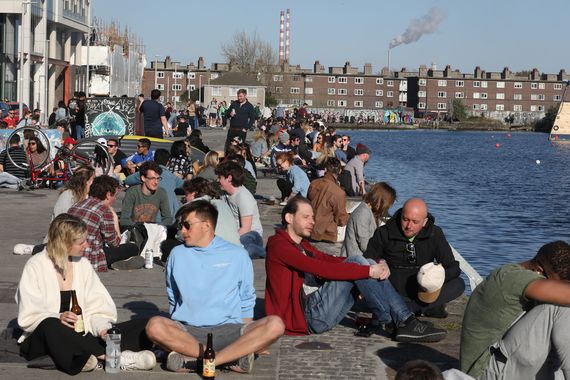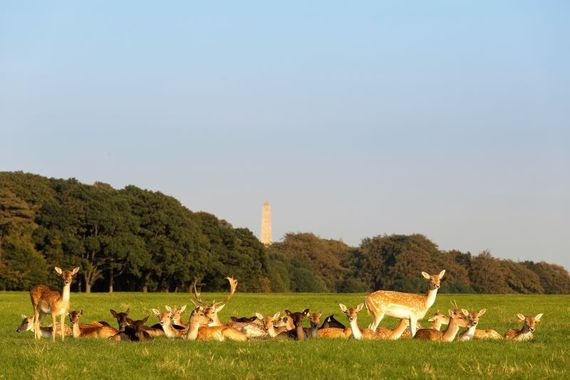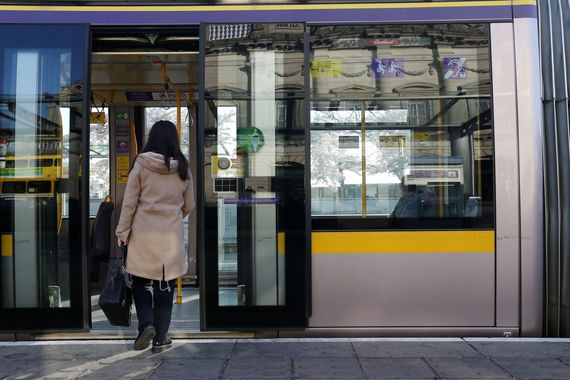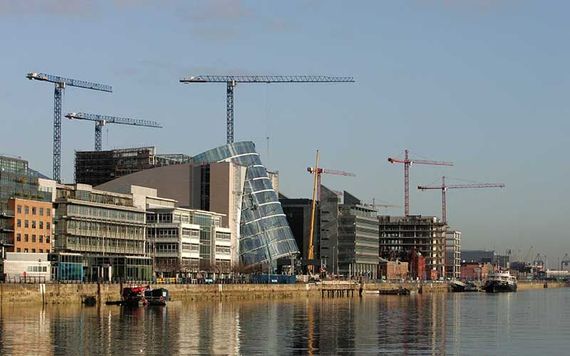Beauty, culture, great craic, and plenty to do! Dublin's a great place to visit on vacation but what are the real pros and cons of living in Ireland's capital?
Dublin is a beautiful, cultural city full of characters. There’s always craic to be had, and you’re never more than a stone’s throw away from nature. There are endless things to see, do, and eat.
But, of course, everything comes with a price, and no city is perfect. You’ll surely have your frustrations; you’ll often find yourself waiting and wondering if your bus will ever come, or if your landlord might raise your rent on a whim.
The five best things about living in Dublin:
It’s totally international
Dublin City is Ireland’s cultural capital. With the influx of international company headquarters, as well as an attractive quality of life, families and ex-pats from all corners are settling here, and in most cases, they’ll find they’re very welcome.
I guarantee that in Dublin, you can’t walk two blocks without encountering at least three different languages or foreign accents. In the last year, I’ve befriended people from Brazil, Russia, Norway, Israel, and Spain, and have been able to trade stories and recipes from places I’ve never been to but would love to visit.
With the mix of nationalities comes a hugely varied restaurant cuisine, from Akanchawa’s Honey Pot serving up authentic Nigerian food in Phibsborough, to DaDa’s Moroccan on South William Street; from fancy French bistros to casual Sushi takeout. In supermarkets, you’ll find entire aisles for Polish food, and at the Dun Laoghaire Market you can pick up all of the imported Portuguese goods your heart desires.
Dublin has, of course, also become home to people from all over Ireland, so it’s the perfect place to experience and grow accustomed to the wide variety of Irish accents, from the sing-songy West Cork accent to the distinctive lilt of the Belfast accent.
The craic, buzz, banter
Crowds flock to the Grand Canal during summer in Dublin. (RollingNews.ie)
In Dublin during non-pandemic times, you’ll never find people at a loss for words or feeling bored. Having the craic or quality banter is one of the most important aspects of daily life. After a long workday, there’s a tangible buzz of people sharing stories in pubs, parks, restaurants, beer gardens, or just walking down the street. There’s always a conversation to be had at the bus stop. The taximan will talk your ear off and ask you all about your day. And even though the bars may close early, there’s always someone inviting everyone back to their “gaff” (house) to keep the night young until the early hours of the morning.
Part of having the craic is not taking life too seriously; it’s a very lighthearted place to be. Dubliners will often replace the bland “how are you” with “what’s the story?” - so you should be ready to talk and laugh, and be as confident and witty as you can.
Proximity to nature
Deer in Dublin's Phoenix Park. (Ireland's Content Pool)
Wherever you’re standing in Dublin, you’re never any further than twenty minutes away from nature, whether it’s a beach, the mountains, a park, or botanical gardens. If the buzz of the city ever gets too much, you can hop on the DART and take a short, scenic train ride down or up the Dublin coast to a charming, coastal fishing village. You can go to Phoenix Park, Europe’s largest city park, and relax among the wild deer that casually roam, making you feel like you’re in a Disney forest. You can jump on a Dublin Bike and ride along Sandymount Strand overlooking the water (or the scattered seaweed and seashells, depending on whether the tide is in). The Wicklow Mountains, with countless hiking opportunities and breathtaking views, are just a stone’s throw away. The charming Wicklow towns of Bray and Greystones have a stunning, cliffside coastal walk between the two, and that’s just the beginning of the hundreds of nature walks Dublin and surrounding areas have to offer.
Health and wellness trends
Dublin is currently undergoing a health and wellness revolution: while that would ordinarily warrant an eye-roll, the city still keeps it Irish and has been adapting these popular trends to fit the city’s personality.
These days, Dublin is concerned with good food and exercise. You’ll find many women in formal work attire and sneakers walking to work; the gyms are always crowded, and new ones are popping up everywhere. There are almost as many bicycles on the road as there are cars.
Most restaurants, cafes, and grocery stores cater to those living a vegan, vegetarian, gluten-free, dairy-free, or “paleo” lifestyle, and in fact, many restaurants are fully aligned with one of these diets. There is no shortage of healthy food options: but with all of this going on, Dublin has remained very straightforward about its healthy intentions and doesn’t act blasé or pretentious about it. Many in the movement jokingly call attention to how contrasting these trends are to the way Dublin was only a few years ago, or how they’ll still indulge in a chipper every so often.
Cheaper medical and educational expenses
Compared to the US, a country that’s notorious in this regard, educational and medical expenses in Dublin are a laugh. In terms of getting a good primary school and also a college education, most institutions are free or low-cost. Applying for grants or “free fees” is much easier, so you wouldn’t find many people here who are indebted to their schools in student loans for years like you would in the US.
The same goes for medical expenses - if you qualify for a medical card here, you’re completely off the hook from paying any medical fees. In other, more regular instances, if you go to the ER, while you may have to wait a long time until checked, you will walk out without paying a penny. In many cases, the ambulance ride is free of charge as well.
General Practitioner appointments cost around 60 euros, and if they send you to the hospital with a note, you can skip the line at the ER. In New York, for example, the ambulance ride alone can cost upwards of $1,000, and the medical expenses are shocking.
The five worst things about living in Dublin:
Public transportation
The Luas in Dublin. Rolling News
Public transportation is definitely the most frustrating part of living in Dublin. If you’re commuting from an outer suburb or village, you’re lucky enough to take the LUAS (tram) or DART (coastal train) into the city center. If not, you must on a regular basis the unpredictable Dublin Bus.
Admittedly, everyone loves Dublin bus drivers. But not so much the bus itself. They’re hardly on time, and many times they just won’t show up at all, forcing you to wait for the “next one.” Everyone depends on these massive, yellow double-deckers, yet they’re the most unpredictable part of anyone’s day. And if you have to take two buses to work, you have to pay the fare twice - there’s no sort of 2-in-1 discount for those transferring.
All transportation ceases at around 11:30 pm as well, so you’re forced to take a taxi home if you’re out on the town. There’s the odd “night bus” with service to outer suburbs, but they’re not too common. Not to mention, you never know when the bus drivers or LUAS/DART conductors might be on strike.
Things close early, and on Sundays
Dublin is definitely not a 24-hour city. Most pubs and bars officially close at around 12:30 am, public transport ends around 11:30 pm, and most shops and stores aren’t open late either. Forget going to the bank on the weekends, because they’re not usually open Saturdays, and on weekdays they close at 4 or 5, making it nearly impossible to go after work. While the city center is definitely becoming more accustomed to a late-night, round-the-clock lifestyle, many villages outside the city will still be dead quiet on a Sunday,
It’s expensive
Dublin is one of the most expensive cities in Europe. Rent is high for European standards, and the general cost of living including food and necessities, I find, is on par with that of New York City. A big contributor to the problem is that salaries in Dublin are much lower than the American salary, with the average Dublin graduating salary being €28,000.
This would be an ideal time for Americans to visit, however, as the Euro is currently at a very low-value point and you wouldn’t lose much in the transfer from USD.
Slow construction everywhere
Construction sites in Dublin. Rolling News
In Dublin City, constant construction and unbearable traffic go hand in hand. It’s a beautiful thing that the city is booming and growing: buildings are sprouting up everywhere, and they’re finally connecting the two LUAS lines so that they intersect in the city center. Definitely, be prepared for a building site or two on your trip to Dublin.
Compared to most metropolitan cities, however, there isn’t the same sense of urgency in finishing projects to make commuting easier. If you pass the massive construction site surrounding much of Trinity College Dublin and O’Connell Street where they’re building new LUAS tracks, you won’t often see construction workers -- it’s a common complaint among Dublin residents. On a good day, you’ll see three or four, and they may be or may not be standing and talking to each other. Because of the laid-back schedule, it takes much longer to complete than in other, larger cities. It also makes traffic in the city center tougher, and the clogged roads more dangerous for cyclists.
Hard to find housing
There’s a major housing crisis happening in Dublin, and it’s one of the most prevalent issues facing the city’s youth and ex-pats at the moment. It’s nearly impossible to find an apartment or a room to live in, and at most house viewings, you’ll be one of twenty people to check out the property. I once went to a viewing in Rathmines where over 30 people were waiting outside for one available room. I walked away, as I realized how slim my chances were. House viewings are quite stressful and competitive as well - so it would serve you well to come to the viewing with your documents, and sometimes even a security deposit.
Because of this phenomenon, landlords and leaseholders are raising their rent. They know how sought-after an apartment is in the city, so they realize that people are willing to pay. If it’s any consolation, I haven’t personally experienced huge trouble finding a place, and also haven’t had my rent raised.
* Originally published in April 2017, updated in Jan 2024.




Comments